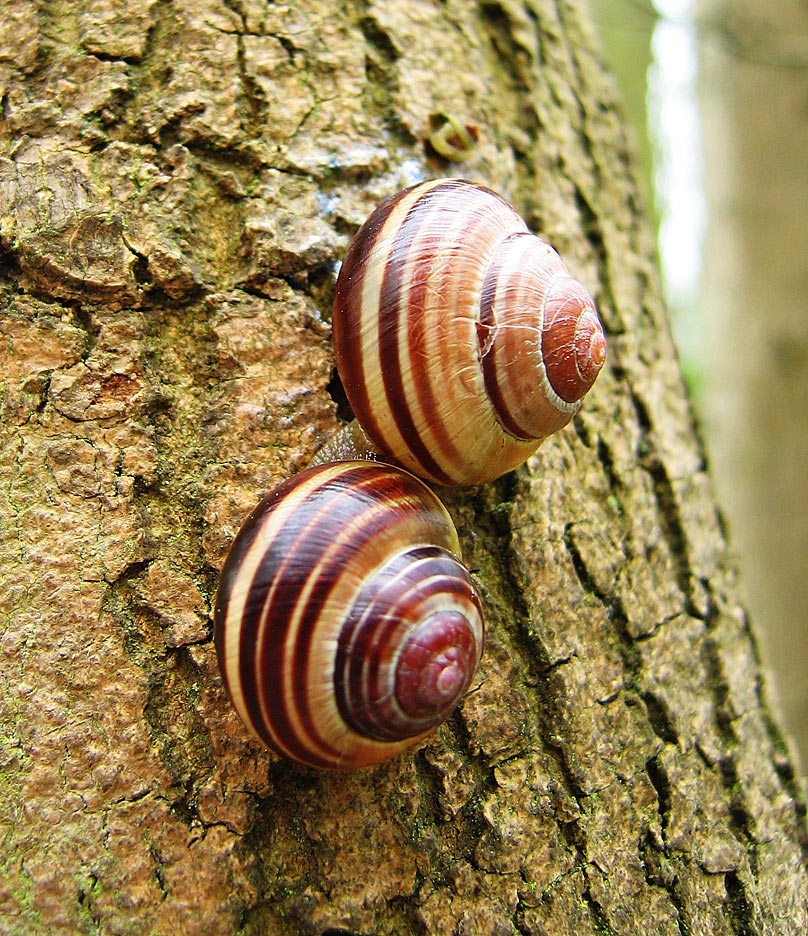The snail Cepaea nemoralis is a organism that could be found all across Europe, and scientist used their shells to study evolution and natural selection. The shell color of the snail is controlled by a single gene "C"with three alternative alleles, and in order of dominance the three alleles are brown, pink, and yellow. These different shell colors exhibits different thermal properties, and laboratory experiments have shown shells with darker colors, such as brown and pink absorb solar radiation more efficiently than light colored shells such as yellow. Due to the thermal properties of the shells, darker shells are better suited for colder climates as they can make the most of the small amount of heat around them, however they are not suited for warmer climates because they are more vulnerable to heat shocks since the take up heat readily. Snails with lighter hand on the other hand are better suited to warmer climates because they can tolerate prolonged sunshine and are therefore are better at with standing heat shocks. From a evolutionary perspective, the snails with the genes for a shell color suitable for their environment will be more likely to survive to reproduce therefore passing on their adaptive trait to the next generation. In other words due to natural selection there will be a larger distribution of darker colored snails at colder environments, conversely there will be a larger distribution of lighter colored snails at hotter environments. Visual selection also play a great role in the evolution of the Cepaea nemoralis snails, one of the many predators of the Cepaea nemoralis snail is the song thrush therefore the ability of the snail to camouflage with it's environment is detrimental in their survival. It was observed that yellow snails are heavily predated in the woodlands because they are more conspicuous against the dark background, where darker snails on the other hand had the advantage of camouflage to avoid predators, and survive to reproduce. So the possible variation between the colors of snails found in different environment could be a product of visual selection and micro-climatic selection, hence demonstrating the evolution of this species of snails through natural selection.
 |
| Cepaea nemoralis |
AIDS stands for acquired immune deficiency syndrome, and people with AIDS are highly susceptible to opportunistic diseases, infections, and cancers that takes advantage of a collapsed immune system. The reason is because the virus that causes AIDS, is HIV (human immunodeficiency virus) and it mainly attacks the T cells in our immune system that are responsible for fighting pathogens. In HIV infection, evolutionary process occurs over the time span of a months to years, rapidly altering the makeup of the viral population from a single individual, this is because once inside the cell, it transcribes itself in reverse, using the enzyme reverse transcriptase to make DNA, the host cell then integrates this newly formed DNA into its own genome. Due to the sheer number and diverse variety of the HIV virus, many could not be eliminated. As an example of natural selection, the immune system targets the virus and eliminate the more susceptible ones leaving behind the viral mutants that has the ability to escape detection and elimination, these selected few then survive to reproduce giving rise to a stronger generation of virus, hence crippling the immune system and leaving the patient vulnerable of invading pathogens.
 |
| HIV Virus |
In every organism on this planet their physical characteristics and outward appearance are determined by genetics, where different combinations of alleles give rise to different traits that helps the organism survive in their giving environment, and as part of ecology different environment give rise to different species whom through the process of natural selection are able to adapt as a population hence evolution. So from this we could observe this relationship between evolution, ecology, and genetics.

